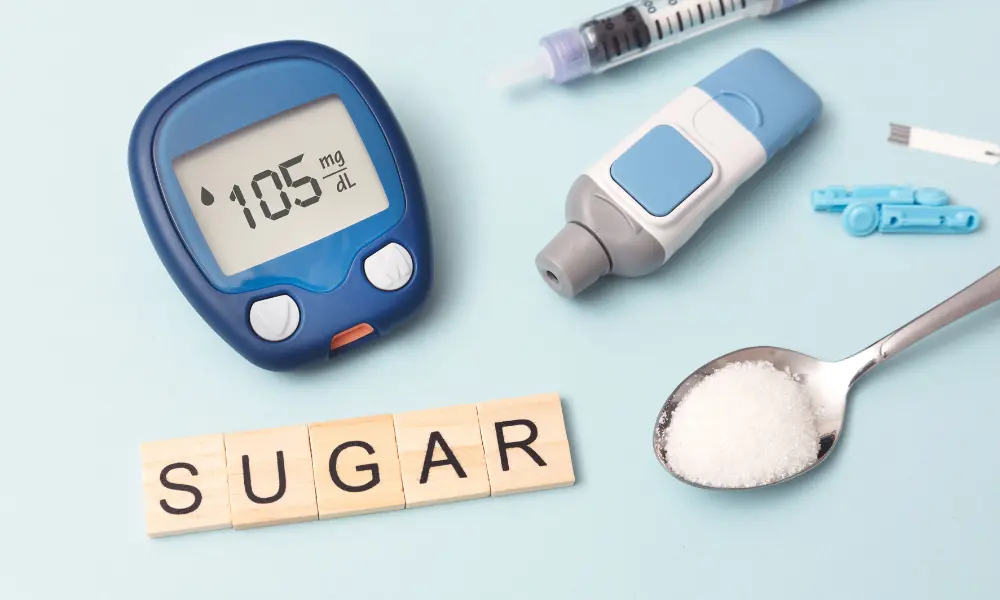Type 2 diabetes is a complex health condition when our body either does not produce sufficient insulin to maintain normal glucose levels or resists the effects of insulin.
Insulin is a hormone responsible for regulating blood sugar, enabling it to enter cells for energy. In type 2 diabetes, our body’s cells become less responsive to insulin, causing the blood sugar levels to rise. Risk factors include obesity, sedentary lifestyle, poor diet, age, and genetic predisposition.
Symptoms often include increased thirst, frequent urination, fatigue, blurred vision, and slow-healing sores. If left untreated, type 2 diabetes may cause health complications such as kidney failure, heart disease, nerve damage, and vision loss.
Management typically involves lifestyle changes like a healthy diet, regular exercise, weight loss, and medications to control blood sugar levels. Regular monitoring and medical check-ups are crucial for preventing complications and maintaining health.
Here are eight effective dietary strategies that can help manage type 2 diabetes.
-
Balanced diet with plenty of vegetables: Filling half of our plate with non-starchy vegetables such as leafy greens, broccoli, and bell peppers can help maintain stable blood sugar levels. These vegetables are low in calories but high in essential vitamins, minerals, and fiber. Their high nutrient density supports overall health and can help prevent insulin resistance.
-
Include healthy fats: Healthy fats that are found in nuts, avocados, seeds, and olive oil are crucial for improving insulin sensitivity and reducing inflammation. These fats help slow digestion, preventing rapid spikes in blood sugar levels. Moreover, they provide essential fatty acids that support heart health, which is particularly important since diabetes is a risk factor for cardiovascular disease.
-
Avoid refined grains: Whole grains such as brown rice, quinoa, oatmeal, and whole wheat products are rich in fiber and essential nutrients. Unlike refined grains, whole grains have their bran and germ intact, which slows down carbohydrate digestion and glucose absorption, leading to a gradual rise in blood sugar. The increased fiber content also helps in weight management, promotes satiety, and reduces the risk of insulin resistance, a key factor in preventing type 2 diabetes.
-
Opt for lean protein sources: Choosing lean proteins like chicken, turkey, fish, legumes, and tofu can aid in blood sugar control by providing a steady energy source without the high levels of saturated fats in red and processed meats. Lean proteins help build and repair tissues, maintain muscle mass, and promote satiety, which can prevent overeating.
-
Increase fiber intake: Foods types that are rich in fiber, like whole grains, vegetables, fruits, and legumes, are essential for slowing the absorption of sugar into the bloodstream. Fibre adds bulk to the diet, promoting feelings of fullness and reducing overall calorie intake. Soluble fiber generally helps lower blood sugar levels by forming a gel-like substance in the gut that slows digestion.
-
Staying hydrated: Consuming plenty of water or fluids during the day is vital for maintaining proper body functions and preventing the consumption of sugary beverages that may negatively impact our blood sugar levels. Staying hydrated helps the kidneys flush out excess sugar through urine.
-
Limit added sugars and refined carbs: Avoiding sugary drinks, sweets, and processed foods high in refined carbohydrates is crucial for preventing blood sugar spikes and insulin resistance. These foods often cause rapid increases in blood glucose, leading to subsequent crashes that can prompt overeating and weight gain.
-
Monitor portion sizes: Mindfulness about portion sizes is vital to avoid overeating, which can lead to increased insulin resistance and weight gain. Using smaller plates and paying attention to hunger and fullness cues can help manage calorie intake. Eating slowly and enjoying each bite allows the body to signal when it is full, preventing excessive food consumption.
These steps may seem simple but are highly effective in managing type 2 diabetes. Additionally, one must monitor sugar levels regularly so that suitable treatment is taken in a timely manner.





